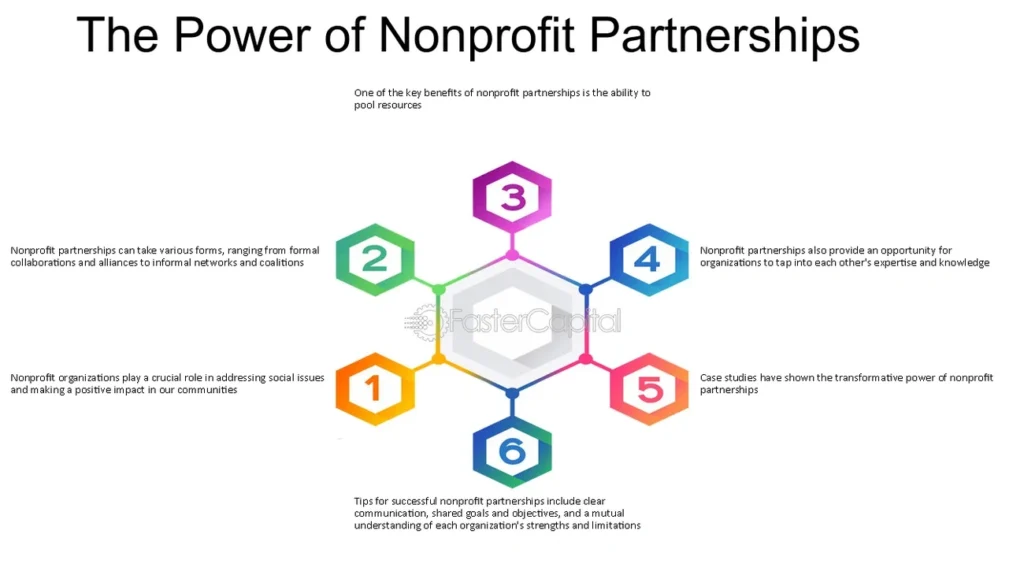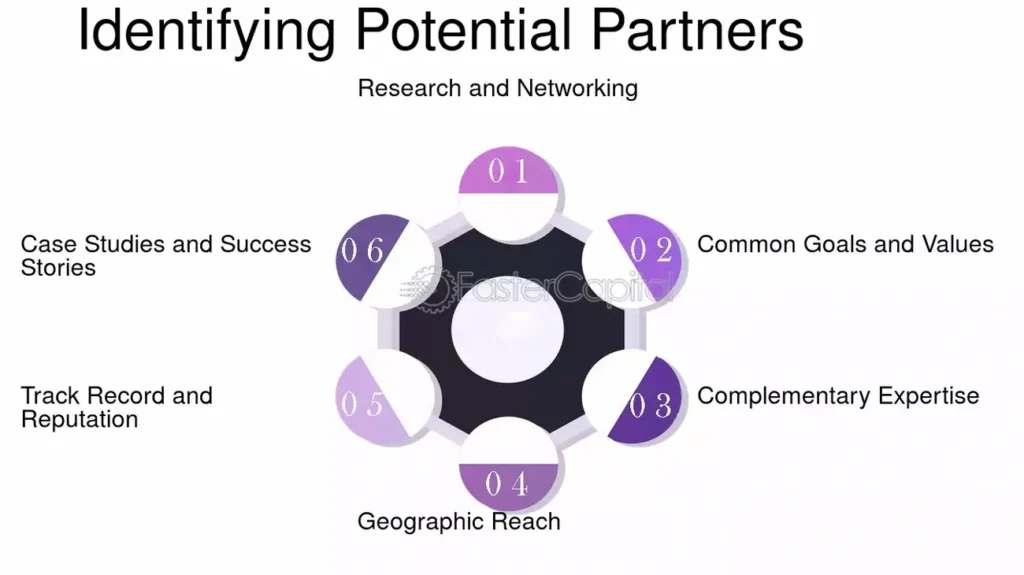Collaboration helps struggling nonprofits become unstoppable forces, especially when they face overwhelming social challenges. More than 1.5 million registered nonprofits in the U.S. compete for attention and funding. These organizations work to address critical issues from affordable housing to climate change.
Organizations must collaborate to maximize their results. Nonprofits that build strategic collaborations save money, expand their services, and strengthen their advocacy voices. This budget-friendly approach works well, especially when you have more than 30 million Americans without access to safe, clean water and increasing weather-related disasters. Cross-promotion with partners can double your marketing reach and boost your organization’s visibility. Many funders now prefer to invest in shared solutions, which makes partnerships a powerful way to develop resources.
This piece shows how nonprofit collaboration became a game-changing approach that helped organizations triple their fundraising results in 2025. You’ll find practical strategies to use in your mission-driven work.
How collaboration became a game-changer for nonprofits in 2025
“I don’t think you ever stop giving. I really don’t. I think it’s an on-going process. And it’s not just about being able to write a check. It’s being able to touch somebody’s life.” — Oprah Winfrey, Media executive, talk show host, philanthropist
Collaboration has moved from being a “nice-to-have” approach to becoming essential for nonprofit survival and growth. Organizations found that teamwork helped them tackle complex social challenges no single entity could solve alone.
The shift from competition to cooperation
Nonprofit leaders saw how the traditional competitive model created unnecessary barriers. Organizations fighting over limited funding, visibility, and resources made it harder to achieve their missions. A major change in thinking happened when organizations started putting cooperation ahead of competition.
Making this change wasn’t easy. Building successful collaborative relationships needed:
- Trust built through transparency and consistent communication
- Common goals and shared visions that lined up
- Breaking down organizational barriers that stopped partnerships
- Resource-sharing systems that helped everyone involved
“Without trust, collaboration is impossible” became a common saying across the sector. Organizations that accepted being vulnerable by sharing their challenges and data built stronger, more effective partnerships.
Why 2025 was a turning point for nonprofit partnerships
The year 2025 brought decisive changes to how funders approached their giving strategies. Major foundations and donors looked specifically for collaborative initiatives, making partnerships necessary rather than optional.
The Bishop-Parker Foundation demonstrated this change by giving a $100,000 grant to Turning Points. This grant encouraged collaborative approaches to prevent homelessness. Similar funding patterns emerged nationwide as donors saw how collective efforts led to better long-term outcomes.
Nonprofits quickly saw real benefits from working together. Organizations that partnered with others reported several advantages:
- Better results through combined expertise and resources
- New funding opportunities they couldn’t access before
- Lower administrative costs through shared infrastructure
- A stronger voice in policy advocacy
- Quick crisis response capabilities
The ecosystem approach became popular as organizations brought their strengths while recognizing how social challenges interconnect. This cooperative mindset helped nonprofits address why problems happen instead of just treating symptoms.
8 ways collaboration helped nonprofits raise 3x more

Image Source: FasterCapital
Nonprofits have found that joining forces leads to much better results. Here’s how teamwork became the life-blood of triple fundraising success:
1. Shared fundraising campaigns
Groups that combined their fundraising efforts tapped into each other’s supporter bases and expanded their reach by a lot. The World Wildlife Fund showed this approach when it teamed up with other conservation groups. They used their combined networks to achieve greater fundraising success. These team campaigns raised awareness about urgent issues and inspired more people to participate.
2. Joint grant applications
Funders now look for teamwork as proof of effect and sustainability. Many grant programs give extra points to partnerships. This opens doors that single applicants couldn’t reach on their own. The approach works well since 30% of nonprofits get government funding.
3. Pooled donor networks
Giving circles have become the fastest-growing form of philanthropy. Nearly 4,000 circles bring together about 370,000 philanthropists. These groups gave over $3.10 billion to charity in five years. Project W giving circle, for example, gave more than $270,000 to Delaware County organizations that support women.
4. Co-hosted events and galas
Joint events turn traditional fundraisers into dynamic experiences that promote generosity. Fun activities replace standard sit down dinners. This creates lasting connections between donors and multiple causes at once.
Want to see how teamwork can boost your nonprofit’s effect? Book a free call with our experts today to discuss custom partnership strategies.
5. Cross-promotion on digital platforms
Online cross-promotion between like-minded organizations brings unexpected benefits. Studies show supporters become more active for both organizations. The original nonprofit sees no drop in giving behavior.
6. Shared administrative and marketing costs
Nonprofits can focus more resources on their missions by splitting overhead expenses. Smart donors now see administrative costs as vital for sustainability.
7. Unified storytelling and branding
Messages that work together create stories that strike a chord with audiences. This builds credibility and emotional connections.
8. Collective impact reporting
Combined measurement systems show broader outcomes. This appeals to impact-focused funders who want system-level change rather than single programs.
Types of nonprofit collaboration that worked best
“Fundraising is the gentle art of teaching the joy of giving.” — Hank Rosso, Founder, The Fund Raising School; pioneer in nonprofit fundraising education
The right partnerships between nonprofits create lasting value for everyone. Here are four proven models that help organizations share resources and achieve better results.
Partnering with businesses for CSR alignment
Strong partnerships happen when nonprofits’ missions match business goals. Companies now base their decisions on corporate purpose beyond just social investments – about 93% of them. Both sides benefit from these partnerships. Nonprofits receive funding and expertise while businesses see better employee morale and brand image. Business donations reached $36.55 billion in 2023, which shows the financial opportunities these relationships offer.
Need help finding the right collaboration model? Book a free discovery call to get tailored advice about partnership approaches that work best.
Working with government for policy and funding
Government partnerships give nonprofits about one-third of their total revenue. Public agencies can provide services more efficiently through these partnerships than on their own. While paperwork can be challenging, successful government partnerships lead to real change. Texas’ CarePortal shows this well – it has helped over 16,000 children in 51 counties.
Collaborating with other nonprofits to avoid duplication
Partnerships within specific sectors help organizations achieve more than they could alone. Smaller nonprofits cut overhead costs by sharing infrastructure, technology, and staff. Different organizations can also help the same people with complementary services. This creates a complete support system.
Engaging community stakeholders for local support
Local support makes programs work better through direct feedback from the people being served. Building trust with local residents, businesses, schools, and other stakeholders ensures services meet real community needs. Mentorship programs and interactive workshops encourage deeper connections between everyone involved.
Lessons from real nonprofit collaboration examples

Image Source: FasterCapital
Success stories from the ground show how nonprofit partnerships create measurable change. These examples highlight the powerful outcomes that strategic collaborations can achieve.
Bridge Builder Communities and their Tiny Home Village
Bridge Builder Communities created a $5 million tiny home village in Augusta, Georgia that provides affordable housing to young adults who age out of foster care. Beasley, Ivey Homes, RW Allen, and McMillan Pazdan Smith Architecture sponsored this project to address a pressing issue – about 50% of teens who leave foster care end up homeless within six months.
Salam Lab’s refugee employment program with IKEA
IKEA worked with social entrepreneurs to create 3,000 long-term jobs that helped over 5,000 refugees and migrants in Poland and Romania. Their Skills for Employment program has supported nearly 3,000 asylum seekers and refugees since 2019, and 54% have found employment.
Diverse Books Coalition’s market influence
The Diverse Books for All Coalition includes over 50 nonprofits from all 50 states that bought 145,000 diverse children’s books worth $1.5 million. The coalition’s members make up more than 20% of the children’s retail market, giving them significant influence with publishers.
NYC Food Consortium’s citywide impact
Food Bank For New York City stands as the city’s largest hunger-relief organization that works with nearly 800 soup kitchens and food pantries throughout the five boroughs. Their network brings fresh produce, culturally relevant food, SNAP assistance, and nutrition education to New York City residents.
Conclusion
Strategic collaborations have revolutionized the nonprofit world. Organizations now thrive by working together instead of competing against each other. Smart nonprofits know that joining forces multiplies their results rather than dividing them. Their team-based approach works remarkably well – they’ve tripled their fundraising while reaching more people efficiently.
Donors and foundations now prefer to fund joint projects that can create lasting change. This makes building partnerships crucial for any organization looking to stay viable. Eight proven strategies – from joint fundraising to shared results reporting – show how to multiply resources without increasing budgets.
The most successful teams come together when partners’ strengths complement each other naturally. Each partnership model brings its own benefits, whether it’s with businesses, government agencies, other nonprofits, or community groups.
Real-life examples show these partnerships at work. Small home communities for foster youth and job programs for refugees prove that teams can achieve what single organizations cannot do alone.
Your nonprofit’s growth depends on building alliances that create more opportunities for everyone involved. You can multiply your organization’s influence through smart partnerships. Book a free consultation call to explore possibilities for your organization.
The key question isn’t whether to partner – it’s choosing the right partners to advance your mission. This team-based approach marks a fundamental change in nonprofit operations. It leads to better sustainability, broader reach, and more lives changed. Your success may depend on building bridges with others in this new age of nonprofit excellence.

